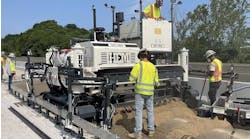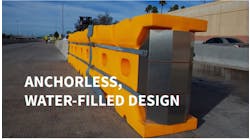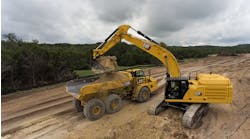Structural sensors are moving into the Information Age.
Phase IV Engineering has introduced a new line of small, strain gauge sensor modules that use breakthrough technology—including the Internet of Things (IoT) and full system wireless integration. The modules create a new “daisy chain” sensor array to quickly and easily monitor multiple points along structural components such as I-beams, girders, hanging structures, support columns, and railways, as well as industrial applications such as rotating shafts in engines, turbine, and other structures.
Scott Dalgleish, CEO of Phase IV, says that by using this new Leap sensors system, structural engineers can string multiple small strain gauge sensor modules to one wireless Leap transceiver node. Anywhere from two to 30 strain gauge modules can be added to the bus. And, in turn, each CAN strain module can support two full-bridge resistive strain gauge sensors, for a total of up to 60 strain gauges per transceiver node.
“Our infrastructure—as well as many private buildings—are aging rapidly,” Dalgleish explained. “And fast, affordable, continuous monitoring of the critical parts of these structures are becoming increasingly important. Using our new Leap system, engineers can have a single CAN bus cable running to four different modules. And each of those can then support two full bridge strain sensors or two load cells. So, we can provide up to eight sensor modules on each device—16 load cells total—all connected to one wireless network.”
Installation of the Phase IV solution is fast and easy, Dalgleish added. “Workers need only spot-weld a connection point on the strain gauges with a standard battery welder. This usually takes around a minute per sensor, as no sanding, cleaning, or epoxy preparation is required. And once they’re in place, the sensors immediately start relaying high-accuracy strain and load readings. A long battery life—coupled with the latest Phase IV electronic technology and over 30 years of experience of sensor design—deliver reliable, long life in the field.”
Even better, Dalgleish added, because the Phase IV Leap sensors are so fast and easy to install and remove, they allow contractors to move in quickly and deploy for just a few days in order to gain insight into failing structures. “Our system is also highly flexible,” he noted. “It’s not usual for installers to miss an area when installing sensors. And if engineers decide another sensor is needed, the system will automatically integrate into the existing system and relay data once it’s installed.”
Additionally, Dalgleish said, Phase IV is retrofittable with older sensor technologies. This means the Leap system can work with engineers to combine multiple, different types of sensors (including analog inputs) on one transceiver node that lets engineers choose from the company’s wide range of off-the-shelf sensors to monitor exactly what you need, in a streamlined design.
The Leap system can be tailored to meet each structure’s unique information needs, Dalgleish added. Once it is in place, users set the parameters for what information they want to be transmitted and how often. Built-in data-logging capabilities save time-stamped readings if transmission is interrupted for additional security. Using Phase IV’s proprietary software allows engineers to integrate with their existing software using one of the company’s easy data interfaces to track data as well as set text, email, or telephone alerts on critical sensor limits.
“We had a lot of customer feedback from people who found it difficult to install and calibrate sensors in the field,” Dalgleish added. “Transmitters cost a lot. And it really doesn’t make sense to just have one transmitter supporting one strain sensor on a site. The Leap system addresses all of those shortcomings in a way we feel will revolutionize structural fault monitoring for the engineering community.”



